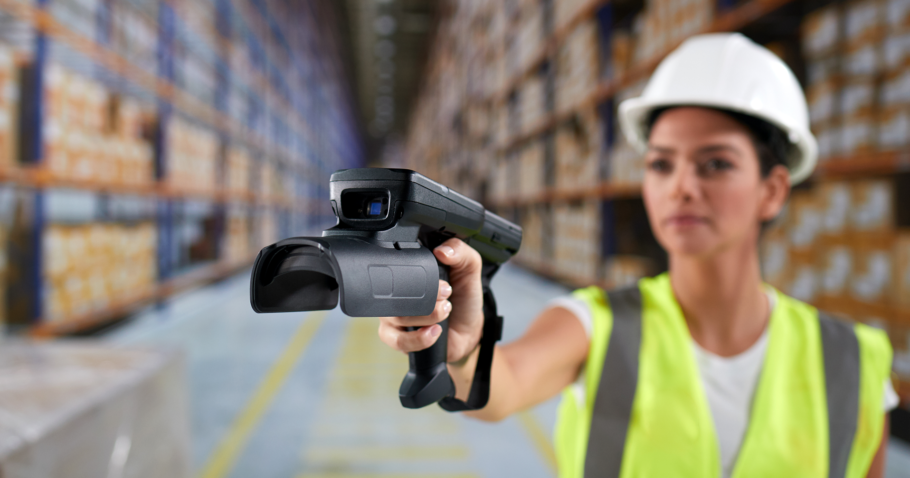

Indicium supplies smart RFID solutions for various applications and industries. With our total solutions you are completely unburdened.
RFID stands for Radio Frequency Identification, or data transfer over a specific radio frequency. The data is exchanged between RFID tags and RFID readers. The advantage of RFID is that no direct line of sight is required, as is the case with scanning a barcode. RFID readers can also read large numbers of tags simultaneously.
An RFID system consists of the following components:
A transponder
The transponder is the data carrier, this can for example be a label or a tag in which the RFID chip is incorporated. Active RFID transponders are also equipped with a battery.
A reader
This reads the data from the RFID chip. Depending on the application, you can opt for a solution in which the antenna and reader are combined, or a reader with an external antenna.
(Mobile) computer
The reader then forwards the read data to the host computer, which processes the data. This can be either a fixed setup or a mobile solution, where the reader and the mobile computer are combined in one device.
RFID systems can use different frequency bands. Each frequency has different properties and advantages and disadvantages in terms of read distance, read speed and disturbance from environmental materials.
Low Frequency (LF)
High Frequency (HF) / Near Field Communication (NFC)
Ultra High Frequency (UHF) Passive
Ultra High Frequency (UHF) Active
Super High Frequency (SHF)
Within RFID, a distinction can be made between passive and active systems. In the passive systems, the data transfer takes place when the information is read with the reader. With active RFID systems, on the other hand, the transponders actively transmit their signal. To make this possible, the transponders must be provided with an internal power source.
In order for the implementation of an RFID system to be successful, this process must be carefully supervised. From advice on the right technology, to integration with your existing software or custom software development. Our specialists supervise the project from A to Z, whereby you always have one fixed point of contact.
